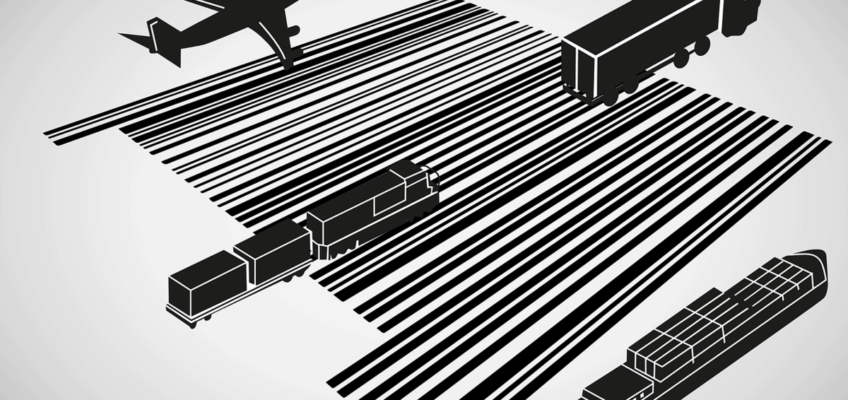How the barcode has become a blueprint for our relationship with data in the virtual age.
There is a lot of excitement around immersive technologies these days. AR/VR/XR – whatever flavour acronym you choose – are all based on the idea that we’re moving towards a symbiotic relationship with data and machines, where the physical and digital world seamlessly blend together into a “Mixed Reality”.
It might not look like much next to flashy holograms, but ever since an Ohio supermarket cashier named Sharon Buchanan first rang up a pack of Juicy Fruit gum in 1974, the world has never been quite the same Share on XBut regardless of whether that’s your idea of utopia or a Black Mirror nightmare scenario, this blending of “real” and “virtual” is far from a new concept. For many decades now, a simple and enduring piece of tech has been doing just that: the humble barcode.
It might not look like much next to flashy holograms, but ever since an Ohio supermarket cashier named Sharon Buchanan first rang up a pack of Juicy Fruit gum in 1974, the world has never been quite the same.
The Universal Product Code (UPC) was invented by Joe Woodland (although the rectangular format we’re familiar with today was designed by IBM engineer George Laurer) as a way to identify individual products to ease inventory management and agilise the checkout experience. Nowadays, according to Brussels-based nonprofit GS1 – which safeguards the international UPC standards – an average of 5 billion barcodes as scanned around the world every single day.
The Universal Product Code (UPC) was invented by Joe Woodland Share on XIt’s not just that the barcode revolutionized how we shopped, or the way retailers managed the inventory, and the global supply chain. It’s that this technology effectively linked physical objects with digital data using one universal language that was easily replicated and infinitely scalable.
And that template is now being used to manage and quantify data across areas that go well beyond retail, linking it to the physical world in ever more complex and sophisticated ways. We’re fast moving towards a place where our very biology can literally be summed up in a barcode. It is possible to encode messages within DNA in the same way that computer programmers use ones and zeroes, and it can hold significantly larger amounts of information in an infinitely smaller space than binary code.
In 2003, Paul Hebert, a researcher at the University of Guelph in Ontario, Canada, devised a form of “DNA barcoding” as a way to identify species. The resulting International Barcode of Life (IBOL) format uses a short genetic sequence from a standard part of the genome in the same way a supermarket scanner distinguishes products using the distinctive UPC black stripes.
Barcode Technology linked physical objects with digital data using one universal language that was easily replicated and infinitely scalable Share on XWith traditional taxonomy, if a specimen is damaged or is in an immature stage of development, even specialists may be unable to make identifications. Barcoding solves this because even tiny amounts of tissue are sufficient to accurately identify a species once it is catalogued in public repositories such as the Barcode of Life Database which has over 300,000 individual species names have been added so far.
Whereas normal barcodes identify a product with a unique pattern of numbers, these molecular barcodes are created by stitching together a unique sequence of DNA nucleotides, which can then be copied and applied to all manner of objects, and even safely consumed. This synthesized DNA, while physically very small, is substantially longer than a normal barcode
Molecular barcodes are created by stitching together a unique sequence of DNA nucleotides, which can then be copied and applied to all manner of objects, and even safely consumed Share on XManufacturers are now turning toward this DNA barcoding technology to track products and even people. Its use in Loomis cash boxes in the UK has led to convictions in over 200 ATM heists, and it is now being applied as an anti-counterfeiting mechanism to all sorts of products, from cars to guitars and even medicines. Counterfeiting costs American businesses more than $200 billion a year a $1.7 trillion problem globally, so it is easy to see why the technology is proving so popular.
It seems the journey that started almost half a century ago with the first barcode is now taking us into a future where it will be almost impossible to separate our biological and quantified data selves.
The journey that started almost half a century ago with the first barcode is now taking us into a future where it will be almost impossible to separate our biological and quantified data selves Share on XYet we don’t need to look much further than the Facebook/Cambridge Analytica saga to see just how much real damage can come from such data falling into the wrong hands. The question it begs – how we deal with this new blended reality and keep our data safe in this ultra-barcoded world, is an urgent one.
For a deeper dive into the fascinating world of Barcodes and why they matter in our lives, take a look at my Quartz Obsessions email
👀 from today’s @qz Obsession on barcodes pic.twitter.com/Ysz3V5Z0DV https://t.co/rOt1eXxD3G
— jessanne collins (@jessanne) June 22, 2018
For companies looking to get into Immersive technologies such as VR/AR/MR/XR our Virtual Reality Consultancy services offer guidance and support on how best to incorporate these into your brand strategy.
Alice Bonasio is a VR and Digital Transformation Consultant and Tech Trends’ Editor in Chief. She also regularly writes for Fast Company, Ars Technica, Quartz, Wired and others. Connect with her on LinkedIn and follow @alicebonasio on Twitter.









